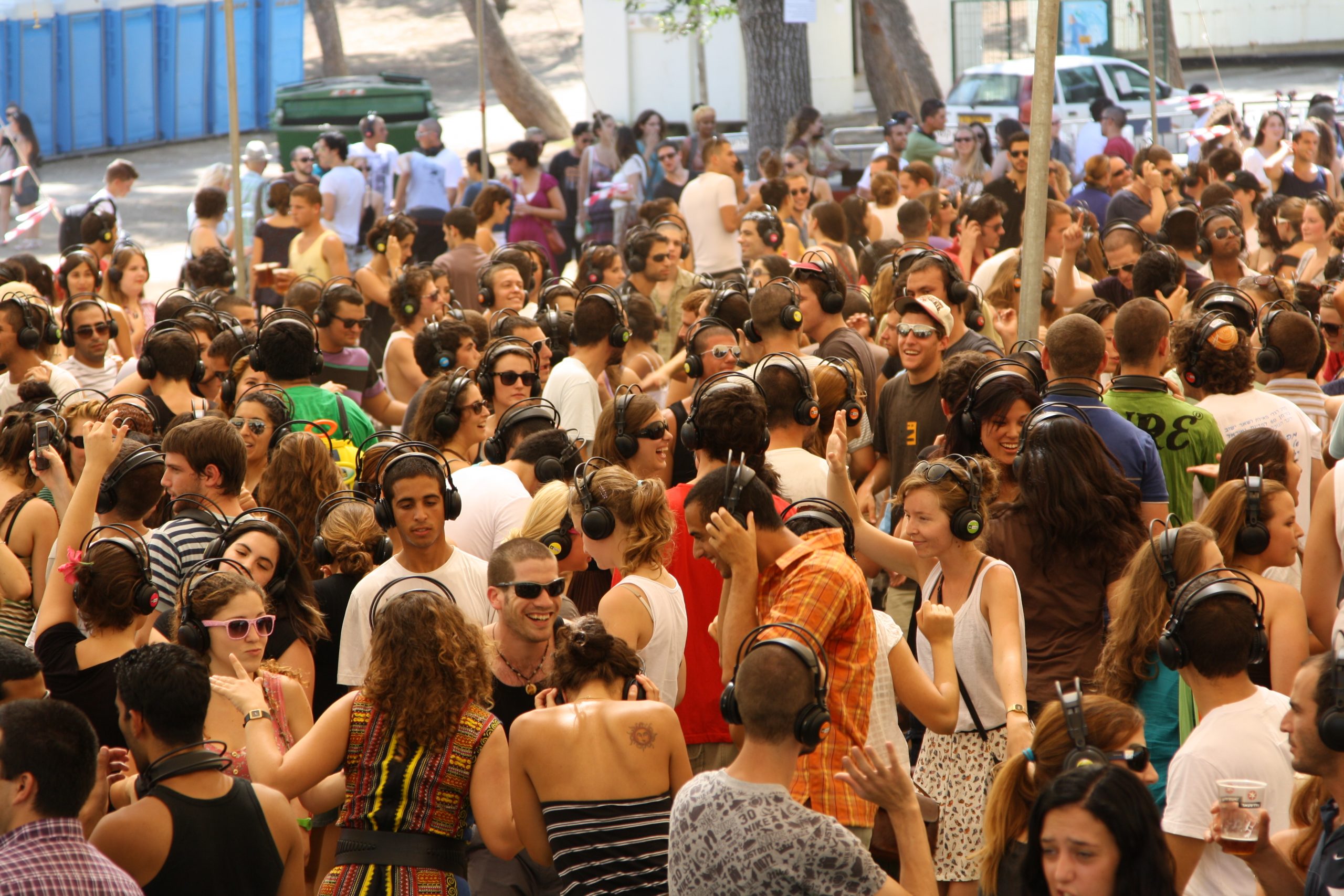When Glastonbury Festival launched the UK’s first official ‘silent disco’ in 2005, onlooker Jill Hobson wasn’t a huge fan. She said: “I’d rather feel the music around me, when you feel the bass.”
Student Hannah Kassimi and her friends admitted: “I don’t think we’d come back, this is probably just an experience”. In spite of its critics, the silent disco, a term which entered into the Oxford English Dictionary in 2011, has been increasing ever since, with headphone concerts, weddings and operas springing up across Europe. Headphone parties, which are in effect a room of people dancing in silence, allow radio transmitters to replace speaker systems, transmitting signals to wireless headphones worn by crowds.
Before its soaring popularity throughout the last decade, silent discos were regularly attended by eco-activists in the 1960s to minimise noise pollution and wildlife disturbance, supporting Time Out magasine’s view that: “it’s probably one of the most polite clubbing events you can have”. Allowing activists to gather large groups in forests that were about to be logged, silent discos was used to raise awareness of political and environmental protests whilst protecting animal habitats through the use of portable audio devices.
Since Glastonbury’s revival of the concept in 2005, in order to reduce overnight noise for residents in the nearby village of Pilton, silent discos have become regular festival events. The Guardian recently commented on the usefulness of “the quietest party in town” at music festivals “as a response to the problem of noise pollution”, as local councils often “issue a license for a festival on the condition that its main stages and tents shut down on the stroke of midnight”. The popularity of continuing the party throughout the night can be seen specifically at the annual Reading and Leeds Festivals, at which silent disco tent crowds have been increasing every year, with campers attracted to an “after hours” experience once the main stages have closed. 15 year old Mollie Nock, who recently attended her first headphone party at Reading Festival, stated: “it feels freer and nobody really cares. I don’t know why it’s more interesting and enjoyable than a normal disco, but for some reason it seems less awkward.”
It’s not just festival-goers that are enjoying this new phase. Companies providing home silent disco kits from £250 have seen increasing profits. Grahame Ferguson, director of the firm Headphone Disco, commented on the rising interest in his business since its inception in 2007, stating: “We thought we might get a year out of it, but we keep getting busier and busier”.
In a 2009 article, The Telegraph observed that this new phase “is becoming increasingly popular at weddings and private parties”. Indeed, this can be seen in houses throughout the UK where teenagers can dance the night away without keeping their neighbours awake. The wedding industry has also seen an alteration, with 2011 bride Ellie choosing to hold a silent disco after her ceremony. Ellie said that “seeing all of the groom’s friends dancing to drum and bass whilst his parents were doing the tango on the other side of the dance floor” was a perfect solution to the guests’ differing musical tastes.
Student unions have also embraced headphone discos. The University of Edinburgh reflects this trend, with Potterrow’s recent headphone party gathering large crowds, as well as McEwan Hall acting as a popular destination for silent disco-goers throughout the Edinburgh Festival Fringe.
Despite worries that headphone parties would entail technical issues such as dead batteries, vastly improved technology such as specially designed wireless headphones and better in-house custom made transmitters have ensured that this surprising silent trend continues to fill dance floors across the country.

